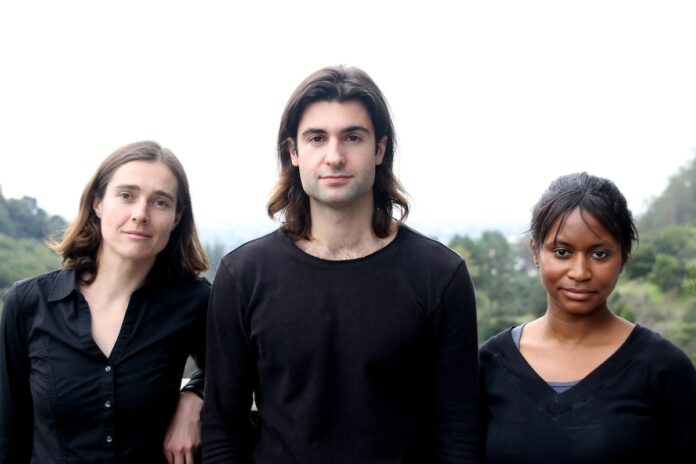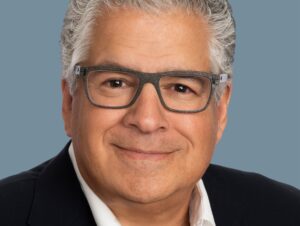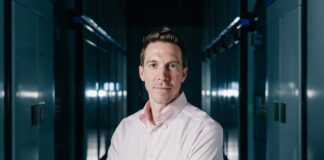Twelve has won the GREEN AWARDS Los Angeles in the Start-up category on November 14, recognized for its innovative contributions to sustainable technology
What inspired the founding of Twelve, and what challenges in the aviation and energy sectors did you hope to address with E-Jet®?
Carbon Transformation was born from breakthrough discoveries by Dr. Etosha Cave and Dr. Kendra Kuhl at Stanford, where they researched ways of transforming CO₂ to shift the climate change paradigm by viewing CO₂ as a feedstock rather than waste. They co-founded Twelve with fellow Stanford graduate and cleantech entrepreneur Nicholas Flanders to take their discoveries from the lab and translate them into a commercial solution. Twelve was founded in 2015 by Nicholas Flanders, Etosha Cave, and Kendra Kuhl. The co-founders met at Stanford University, where Etosha and Kendra were PhD students studying electrocatalysts for CO₂ conversion, and Nicholas was getting his MBA.
Etosha, who grew up near oil refineries in Texas, knows firsthand the harm they can bring to communities, leading her to explore alternative carbon sources. Inspired by her upbringing with a National Park ranger father, Kendra was driven by a passion for environmental protection. Nicholas met Etosha at the student space club, and he immediately recognized the potential of Kendra and Etosha’s technology if scaled. Together, they aimed to impact climate change with a scalable device that turns CO₂ into products conventionally made with fossil fuels. Twelve’s leadership team pairs personal dedication to climate action with the scientific, technical, and business expertise necessary to bring paradigm-shifting technology to scale.
Could you explain the process of carbon transformation and how E-Jet® SAF is produced from CO₂, water, and renewable energy?
Twelve’s carbon transformation technology works like industrial photosynthesis – making hydrocarbons from CO₂, water, and renewable energy via CO₂ electrolysis. At the core of Twelve’s technology is a Membrane Electrode Assembly (MEA), a shiny black leaf that transforms CO₂ into essential chemicals, materials, and fuels traditionally derived from fossil fuels.
E-Jet® SAF has up to 90% lower lifecycle emissions than conventional jet fuel. What does this mean for the aviation industry’s carbon footprint?
Twelve’s E-Jet® fuel arrives at a pivotal time, as the aviation industry consumes 100 billion gallons of fossil fuels and emits 1.2 billion tons of CO₂ yearly. As the industry seeks emission reductions, Twelve’s technology can address up to 10% of global emissions and 50% of industrial emissions that are challenging to decarbonize. Theoretical deployment could address 2-3 gigatonnes of CO₂ emissions annually—nearly 10% of global emissions—by replacing petrochemicals (1 Gt CO₂), aviation fuel (1 Gt CO₂), diesel for shipping, and long-haul trucking (0.5 Gt CO₂), along with biomethane upgrading (>0.2 Gt CO₂).
Your fuel has been certified by the U.S. Air Force. How did this validation impact Twelve’s credibility within the sustainable fuel sector?
E-Jet® fuel was tested and certified by the U.S. Air Force in 2021, is drop-in ready for use in existing aircraft, and is made to ASTM D7566 specifications, the same performance standard as fossil-based jet fuel. With up to 90% lower lifecycle emissions and fewer sulfur dioxide (SO₂), nitrogen oxides (NOx), and other particulate emissions, the certification has established our market validity. Partnerships with airlines such as Alaska Airlines & IAG, who plan to use Twelve’s E-Jet fuel across their networks, are bolstered by this certification, as is investor confidence in the future of SAF through the E-Jet product.
In your view, why is Power-to-Liquid (PtL) fuel like E-Jet® more sustainable than biofuels?
E-Jet® fuel is a Power-to-Liquids (PtL) fuel made from recycled CO₂. PtL has up to 90% lower emissions than conventional jet fuel and 20-30% lower emissions than the leading SAF. The CO₂ used to produce E-Jet® fuel can be sourced from direct air capture or a point source, such as a paper mill or other biogenic processing facilities. This allows for unique synergies with climate-focused organizations, particularly carbon capture organizations. By producing E-Jet® fuel with captured CO₂, Twelve creates a closed carbon loop, addressing the question of what to do with captured emissions.
Find more out in our Know Your SAF Guide.
What are the key challenges in scaling up production to meet SAF demand?
To scale E-Jet® fuel production, additional project financing is essential for building fuel production facilities. Clean energy sources such as solar, wind, or hydropower are critical inputs to our process. Our initial production facilities will target regions with abundant clean energy and sources of biogenic CO₂, derived from living organisms and part of the natural carbon cycle. Examples of biogenic CO₂ sources include ethanol plants, pulp and paper mills, and more.
Can you share insights on Twelve’s partnership with IAG and its impact on scaling SAF globally?
Twelve recently launched the “Fuel for the Long Haul” campaign. This campaign reflects our vision for a sustainable future by setting new standards in the sustainable aviation sector.
https://www.forbes.com/sites/gauravsharma/2024/02/29/californian-firm-and-british-airways-owner-iag-ink-largest-deal-for-sustainable-aviation-fuel/
https://biofuels-news.com/news/iag-and-twelve-secure-saf-deal/
https://www.twelve.co/post/twelve-launches-fuel-for-the-long-haul-campaign-setting-a-new-standard-for-sustainable-aviation
With growing interest in SAF, how does Twelve differentiate itself from other companies in the SAF market?
Most SAFs are made with biomass, yet there isn’t enough biomass to decarbonize aviation fully without risks such as deforestation and pollution from land use. Unlike biomass-based fuels, E-Jet is made from recycled CO₂. This CO₂ can be sourced from direct air capture or point sources like paper mills, enabling synergies with other climate-focused organizations, notably in carbon capture. By using captured CO₂, Twelve establishes a closed carbon loop. Additionally, hydrogen fuels, while promising, are challenging to store on aircraft and don’t readily integrate with current planes. In contrast, E-Jet® is drop-in ready, allowing airlines to meet net-zero goals without significant operational changes. Once scaled, E-Jet® fuel is expected to be cost-competitive with fossil fuels without government incentives. Produced anywhere with access to CO₂, water, and electricity, it allows airlines to reduce emissions from fuel transport, as demonstrated in locations like San Francisco’s busy airport.
What’s your vision for SAF’s role in reducing aviation’s climate impact over the next decade?
The aviation industry consumes over 100 billion gallons of fossil fuels annually, emitting 1.2 billion tons of CO₂—a figure that may rise as fuel demand increases. Our vision is to transform this trend by replacing fossil-derived jet fuel with E-Jet® fuel, made from CO₂, water, and renewable electricity via carbon transformation technology. E-Jet fuel can reduce lifecycle emissions by up to 90%, decreasing not only CO₂ but also SO₂, NOx, and particulates, leading to cleaner air and a sustainable aviation future. We envision a future where supply chains and everyday products are powered by air, moving toward a fossil-free future beneficial to consumers, companies, and the planet.
As Twelve expands, what core values or philosophies guide your company culture?
“It Takes Everybody” is a core belief at Twelve. We recognize that no single company or industry can solve the climate crisis alone. Twelve is committed to supporting and empowering other innovators to reach their highest potential. With carbon transformation, we see limitless possibilities and are eager to collaborate with others to integrate our technology where it’s needed.
Looking back, what were some pivotal moments that shaped Twelve’s journey?
In July 2023, Twelve proudly broke ground on the first commercial demonstration-scale facility in the U.S. for producing power-to-liquid sustainable aviation fuel (SAF) from CO₂, water, and renewable energy in Moses Lake, Washington. The plant is expected to start production in 2025, initially producing 5 barrels per day (50,000 gallons annually).
What advice would you offer entrepreneurs working in sustainability and clean technology?
For clean tech entrepreneurs, focus on scalable solutions that tackle high-impact sustainability challenges. Building trust with investors and partners is crucial, as is fostering collaborations to accelerate growth. Most importantly, resilience is key—maintain focus on long-term impact.
Finally, how can individuals and organizations support Twelve’s mission or contribute to the sustainable aviation transition?
Please join us on our journey to a world made from air by following along at www.twelve.co and signing up for our newsletter.
Bildcredits Twelve
Thank you Nicholas Flanders for the Interview
Statements of the author and the interviewee do not necessarily represent the editors and the publisher opinion again.


















